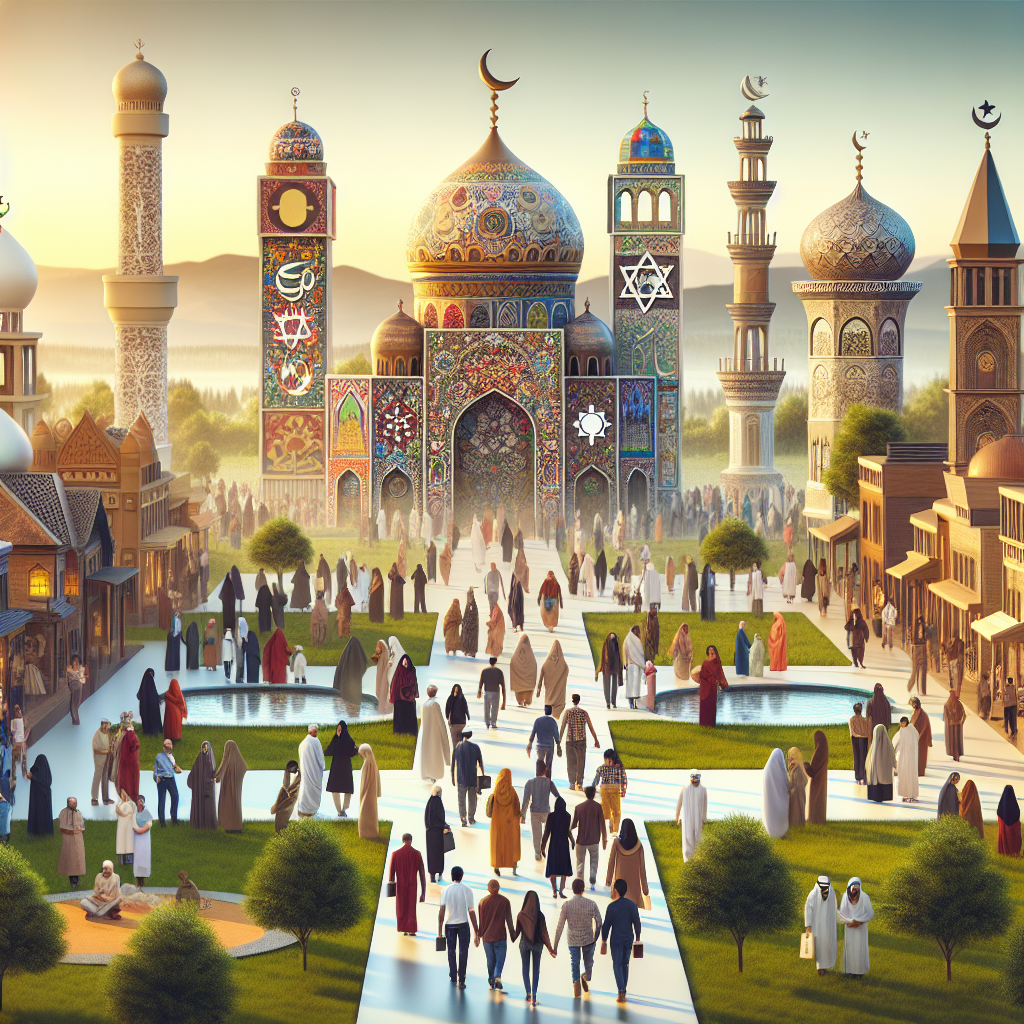“`html
Building a Respectful Interfaith Community in 2025
As we navigate through the complexities of the modern world, the need for a respectful interfaith community has never been more critical. The year 2025 presents a unique opportunity for individuals from diverse religious backgrounds to come together, fostering a climate of mutual understanding and collaboration. By emphasizing dialogue inter-religioso, we can bridge divides and cultivate a culture of respeito and união espiritual.
This article delves into the significance of building interfaith relationships in 2025, offering strategies for effective communication among different faiths and highlighting successful case studies. Join us as we explore the transformative power of respectful dialogue in creating a more inclusive world.
The Importance of Interfaith Dialogue
Interfaith dialogue serves as a foundational pillar for fostering respeito among various religions. In a time where conflicts can often arise from misunderstandings, engaging in meaningful conversations can help dissolve prejudice and promote peace. The essence of dialogue inter-religioso is not merely to coexist, but to genuinely understand and appreciate the beliefs of others.
Historically, religious conflicts have led to division and unrest. However, as we advance into 2025, an emphasis on interfaith collaboration can redefine these narratives. Studies indicate that communities with strong interfaith initiatives experience lower levels of conflict and greater social cohesion. For example, the Interfaith Alliance has successfully demonstrated how dialogue can lead to peaceful coexistence.
Strategies for Building a Respectful Interfaith Community
Creating a harmonious interfaith community requires intentional actions. Here’s a checklist of strategies that can help:
- Encourage open communication between faith leaders.
- Host interfaith events that invite diverse participation.
- Implement educational programs focused on understanding various beliefs.
- Utilize social media to share interfaith stories and experiences.
- Join or form interfaith councils or organizations.
Implementing these strategies can cultivate a sense of belonging and união espiritual among individuals from different backgrounds. Moreover, developing partnerships with local organizations can enhance outreach efforts.
Successful Case Studies in Interfaith Initiatives
Throughout the world, numerous successful interfaith initiatives showcase the potential for dialogue inter-religioso to foster unity. One notable example is the Interfaith Youth Core, which has engaged thousands of young individuals from different faiths to work together on community service projects. This organization emphasizes that mutual respect and collaboration can lead to significant social change.
Additionally, the Pilgrims of the World, a global interfaith pilgrimage, has brought together participants from various religions to engage in dialogue and shared experiences. Such initiatives not only promote respect but also foster a spirit of cooperation among diverse communities.
The Role of Technology in Interfaith Dialogue
As we look towards 2025, technology will play an increasingly pivotal role in facilitating interfaith dialogue. Digital platforms enable individuals from different faiths to connect, share experiences, and learn from one another. Social media campaigns focused on interfaith understanding can generate widespread awareness and participation.
Consider creating virtual interfaith events using platforms like Zoom or Microsoft Teams. These tools can help transcend geographical barriers, enabling a larger audience to engage in dialogue inter-religioso and cultivate respeito.
| Platform | Benefits | Drawbacks |
|---|---|---|
| Zoom | Accessible, supports large groups | Technical issues may arise |
| Facebook Live | Wide reach, interactive | Requires social media presence |
| WhatsApp Groups | Intimate, personal discussions | Limited to smaller groups |
Encouraging Respect and Understanding
Educators and community leaders play a crucial role in promoting respeito through educational initiatives. Schools should incorporate interfaith education into their curriculums to teach students about various beliefs, encouraging empathy and respect from an early age. Workshops, seminars, and guest speakers can enhance the learning experience, providing real-world insights into different spiritual practices.
Common Challenges in Interfaith Dialogue
Despite the benefits, several challenges can hinder effective interfaith dialogue. These include:
- Preconceived notions and stereotypes about other faiths.
- Lack of knowledge or understanding of other beliefs.
- Resistance from individuals unwilling to engage.
Addressing these challenges requires patience and persistence. Creating safe spaces for dialogue where individuals can express their concerns and questions is vital to overcoming resistance and building trust.
Frequently Asked Questions
What is interfaith dialogue?
Interfaith dialogue is the open and respectful exchange of ideas and beliefs between individuals of different faith traditions, aiming to foster understanding and collaboration.
How can I participate in interfaith initiatives?
You can participate by joining local interfaith organizations, attending events, and engaging in discussions that promote mutual respect and understanding.
Why is respect important in interfaith dialogue?
Respect is the foundation of effective communication and is essential for fostering trust and cooperation among diverse communities.
What are some examples of successful interfaith projects?
Examples include the Interfaith Youth Core and the Pilgrims of the World pilgrimage, both of which have successfully brought together individuals from various faiths to collaborate on community initiatives.
How can technology aid interfaith dialogue?
Technology facilitates communication and connection among diverse religious groups, enabling virtual events and the sharing of interfaith experiences.
What challenges can arise in interfaith dialogue?
Challenges may include stereotypes, a lack of understanding, and resistance from individuals unwilling to engage in discussions.
Conclusion
As we approach 2025, the formation of a respectful interfaith community is not just a necessity but a shared mission. By investing in dialogue inter-religioso, we can dismantle barriers built on misunderstanding and foster a culture characterized by respeito and união espiritual. It is each of our responsibilities to cultivate these relationships and nurture the seeds of cooperation and compassion.
Let us commit ourselves to this journey, creating a future where diverse faiths can not only coexist but thrive together. Join the movement today, engage with others, and become part of a global community that values respect and understanding.
“`

